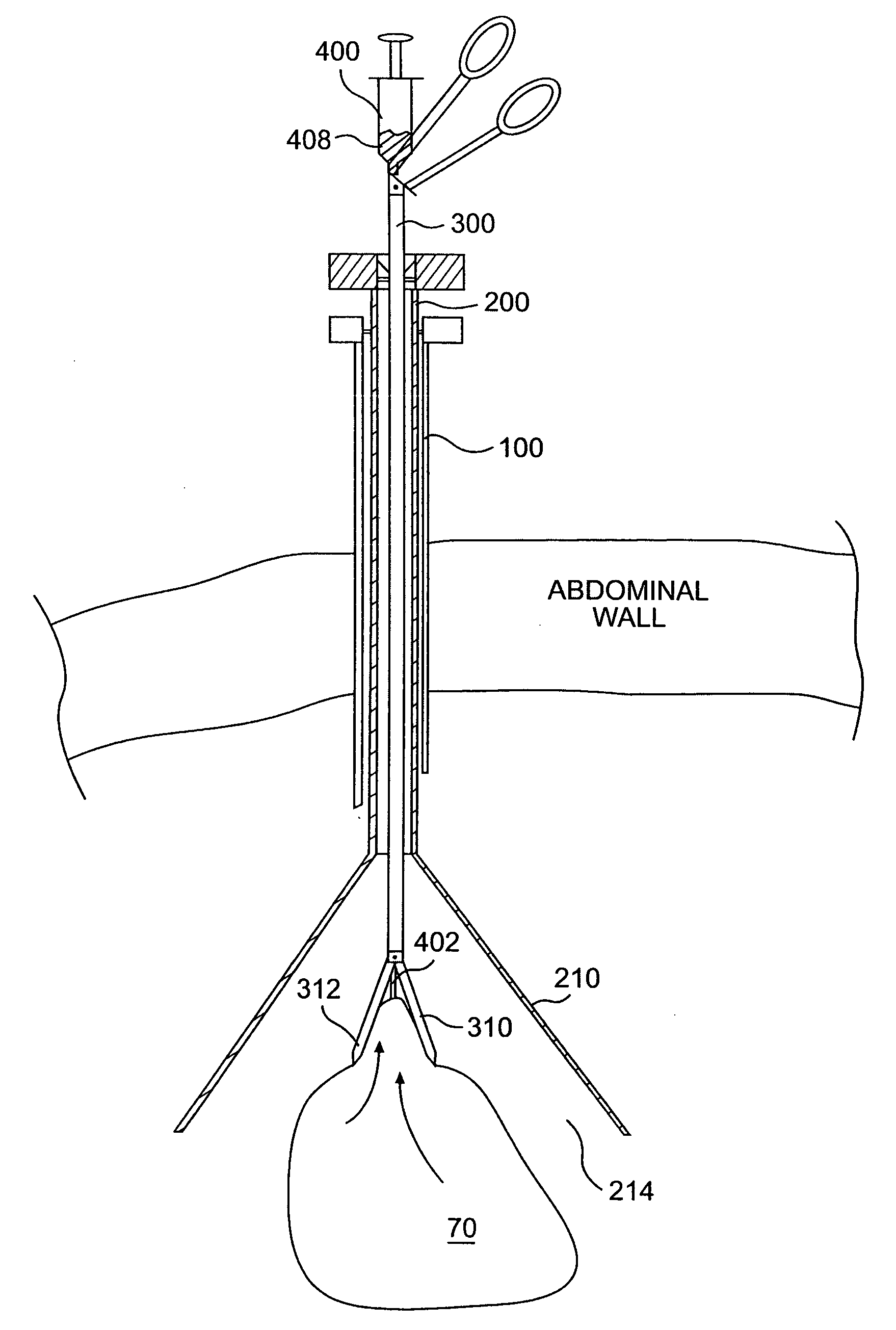Laparoscopic instruments and methods utilizing suction
a technology applied in the field of laparoscopic instruments and methods utilizing suction, can solve the problems of increasing the size of the wound to be dilated, increasing the size of the bag, and reducing so as to minimize the cross section of the tissue, reduce the force required to remove the tissue, and minimize the effect of the need for wound dilation
- Summary
- Abstract
- Description
- Claims
- Application Information
AI Technical Summary
Benefits of technology
Problems solved by technology
Method used
Image
Examples
Embodiment Construction
[0030] Reference will now be made in detail to the present preferred embodiments (exemplary embodiments) of the invention, examples of which are illustrated in the accompanying drawings. Wherever possible, the same reference numbers will be used throughout the drawings to refer to the same or like parts.
[0031]FIG. 1 shows a tool set 50 having a cannula 100, a dilator extractor 200, a grasper 300, and syringe device 400. As shown in FIGS. 1 and 9, syringe 400 is insertable in grasper 300, which is in turn insertable in dilator extractor 200, which in turn is insertable in cannula 100 to form a multi-coaxial assembly for use in laparoscopic surgery.
[0032] Referring to FIGS. 2-4 and 8, dilator extractor 200 is inserted into a pressurized abdominal cavity 60 through the abdominal wall of a patient. Dilator extractor 200 enters through valve 102 at trailing end 106 of cannula 100.
[0033] Dilator extractor 200 includes a body 202 having a leading end 204, a trailing end 206, a longitudi...
PUM
 Login to View More
Login to View More Abstract
Description
Claims
Application Information
 Login to View More
Login to View More - R&D
- Intellectual Property
- Life Sciences
- Materials
- Tech Scout
- Unparalleled Data Quality
- Higher Quality Content
- 60% Fewer Hallucinations
Browse by: Latest US Patents, China's latest patents, Technical Efficacy Thesaurus, Application Domain, Technology Topic, Popular Technical Reports.
© 2025 PatSnap. All rights reserved.Legal|Privacy policy|Modern Slavery Act Transparency Statement|Sitemap|About US| Contact US: help@patsnap.com



